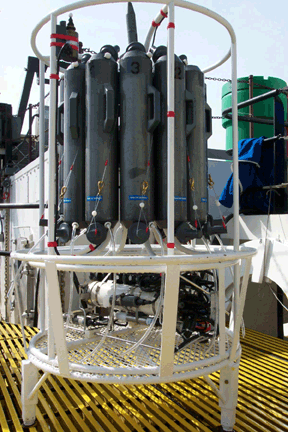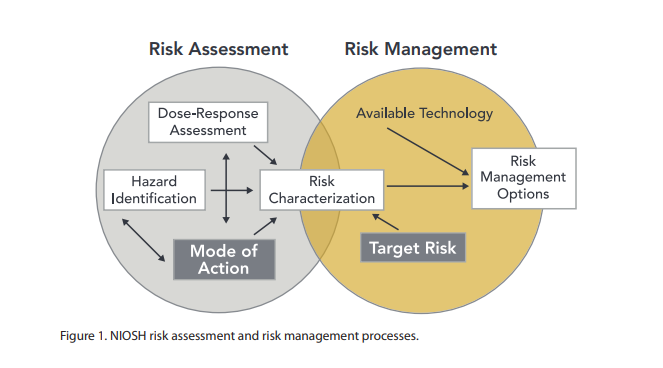|
Water Safety Plan
A water safety plan is a plan to ensure the safety of drinking water through the use of a comprehensive risk assessment and risk management approach that encompasses all steps in water supply from catchment to consumer. Origins According to the World Health Organization, "During the revision of the World Health Organization (WHO) Guidelines for Drinking-water Quality (GDWQ) leading to the 3rd edition, the value of the Water Safety Plan (WSP) approach has repeatedly been highlighted ... in a series of expert review meetings in Berlin (2000), Adelaide (2001) and Loughborough (2001)." Water safety plans are considered by the WHO as the most effective means of maintaining a safe supply of drinking water to the public. Their use should ensure that water is safe for all forms of human consumption and that it meets regulatory water standards relating to human health. ("Consumption" includes not only drinking ''per se'', but also other forms of ordinary contact, such as bathing, dishwash ... [...More Info...] [...Related Items...] OR: [Wikipedia] [Google] [Baidu] |
Water Quality
Water quality refers to the chemical, physical, and biological characteristics of water based on the standards of its usage. It is most frequently used by reference to a set of standards against which compliance, generally achieved through treatment of the water, can be assessed. The most common standards used to monitor and assess water quality convey the health of ecosystems, safety of human contact, extent of water pollution and condition of drinking water. Water quality has a significant impact on water supply and often determines supply options. Impacts on public health Over time, there has been increasing recognition of the importance of drinking water quality and its impact on public health. This has led to increasing protection and management of water quality. Text was copied from this source, which is available under a creativecommons:by/4.0/, Creative Commons Attribution 4.0 International License The understanding of the links between water quality and healt ... [...More Info...] [...Related Items...] OR: [Wikipedia] [Google] [Baidu] |
HACCP
Hazard analysis and critical control points, or HACCP (), is a systematic preventive approach to food safety from biological hazard, biological, chemical hazard, chemical, and physical hazards in production processes that can cause the finished product to be unsafe and designs measures to reduce these risks to a safe level. In this manner, HACCP attempts to avoid hazards rather than attempting to inspect finished products for the effects of those hazards. The HACCP system can be used at all stages of a food chain, from food processing, food production and preparation processes including packaging, distribution, etc. The United States Food and Drug Administration, Food and Drug Administration (FDA) and the United States Department of Agriculture (USDA) require mandatory HACCP programs for juice and meat as an effective approach to food safety and protecting public health. Meat HACCP systems are regulated by the USDA, while seafood and juice are regulated by the FDA. All other food ... [...More Info...] [...Related Items...] OR: [Wikipedia] [Google] [Baidu] |
ISO 14001
The ISO 14000 family is a set of international standards for Natural environment, environment management systems. It was developed in March 1996 by International Organization for Standardization. The goal of these standards is to help organizations (a) minimize how their operations (processes, etc.) negatively environmental effects, affect the environment (i.e. cause adverse changes to air, water, or land); (b) comply with applicable laws, regulations, and other environmentally oriented requirements; and (c) continually improve in the above. The standards were designed to fit into an integrated management system. ISO 14000 is similar to ISO 9000 quality management in that both pertain to the process of how a service/product is rendered, rather than to the service/product itself. As with ISO 9001, certification is performed by third-party organizations rather than being awarded by ISO directly. The ISO 19011 and Accreditation, ISO 17021 audit standards apply when audits are being pe ... [...More Info...] [...Related Items...] OR: [Wikipedia] [Google] [Baidu] |
Food Safety
Food safety (or food hygiene) is used as a scientific method/discipline describing handling, food processing, preparation, and food storage, storage of food in ways that prevent foodborne illness. The occurrence of two or more cases of a similar illness resulting from the ingestion of a common food is known as a food-borne disease outbreak. This includes a number of routines that should be followed to avoid potential health, health hazards. In this way, food safety often overlaps with food defense to prevent harm to consumers. The tracks within this line of thought are safety between industry and the market and then between the market and the consumer. In considering industry-to-market practices, food safety considerations include the origins of food including the practices relating to Food labelling regulations, food labeling, food hygiene, food additives and pesticide residues, as well as policies on biotechnology and food and guidelines for the management of governmental imp ... [...More Info...] [...Related Items...] OR: [Wikipedia] [Google] [Baidu] |
Department Of Health And Social Care
The Department of Health and Social Care (DHSC) is a ministerial department of the Government of the United Kingdom. It is responsible for government policy on health and adult social care matters in England, along with a few elements of the same matters which are not otherwise devolved to the Scottish Government, Welsh Government or Northern Ireland Executive. It oversees the English National Health Service (NHS). The department is led by the Secretary of State for Health and Social Care with three ministers of state and three parliamentary under-secretaries of state. The department develops policies and guidelines to improve the quality of care and to meet patient expectations. It carries out some of its work through arms-length bodies (ALBs), including executive non-departmental public bodies such as NHS England and the NHS Digital, and executive agencies such as the UK Health Security Agency and the Medicines and Healthcare products Regulatory Agency (MHRA). The ... [...More Info...] [...Related Items...] OR: [Wikipedia] [Google] [Baidu] |
Drinking Water Inspectorate
The Drinking Water Inspectorate (DWI) is a section of Department for Environment, Food and Rural Affairs (Defra) set up to regulate the privatised water supply companies in England and Wales. Based in Whitehall, it produces an annual report showing the quality of and problems associated with drinking water. Its remit is to assess the quality of drinking water Drinking water or potable water is water that is safe for ingestion, either when drunk directly in liquid form or consumed indirectly through food preparation. It is often (but not always) supplied through taps, in which case it is also calle ... in England and Wales, taking enforcement action if standards are not being met, and appropriate action when water is unfit for human consumption. It was responsible for reporting on drinking water quality to the European Union under the European Drinking Water Directive (DWD), Council Directive 98/83/EC, which concerns the quality of water intended for human consumption. [...More Info...] [...Related Items...] OR: [Wikipedia] [Google] [Baidu] |
Risk
In simple terms, risk is the possibility of something bad happening. Risk involves uncertainty about the effects/implications of an activity with respect to something that humans value (such as health, well-being, wealth, property or the environment), often focusing on negative, undesirable consequences. Many different definitions have been proposed. One ISO standard, international standard definition of risk is the "effect of uncertainty on objectives". The understanding of risk, the methods of assessment and management, the descriptions of risk and even the definitions of risk differ in different practice areas (business, economics, Environmental science, environment, finance, information technology, health, insurance, safety, security, security, privacy, etc). This article provides links to more detailed articles on these areas. The international standard for risk management, ISO 31000, provides principles and general guidelines on managing risks faced by organizations. Defi ... [...More Info...] [...Related Items...] OR: [Wikipedia] [Google] [Baidu] |
Hazard
A hazard is a potential source of harm. Substances, events, or circumstances can constitute hazards when their nature would potentially allow them to cause damage to health, life, property, or any other interest of value. The probability of that harm being realized in a specific ''incident'', combined with the magnitude of potential harm, make up its risk. This term is often used synonymously in colloquial speech. Hazards can be classified in several ways which are not mutually exclusive. They can be classified by ''causing actor'' (for example, natural or anthropogenic), by ''physical nature'' (e.g. biological or chemical) or by ''type of damage'' (e.g., health hazard or environmental hazard). Examples of natural disasters with highly harmful impacts on a society are floods, droughts, earthquakes, tropical cyclones, lightning strikes, volcanic activity and wildfires. Technological and anthropogenic hazards include, for example, structural collapses, transport accidents, acc ... [...More Info...] [...Related Items...] OR: [Wikipedia] [Google] [Baidu] |
Multi-barrier Approach
The Multi-barrier approach is a key paradigm for ensuring safe drinking water in jurisdictions such as Ontario, elsewhere in Canada, and New Zealand. It is defined as, An integrated system of procedures, processes and tools that collectively prevent or reduce the contamination of drinking water from source to tap in order to reduce risks to public health. In Part 2 of his report on the Walkerton Tragedy, Justice Dennis O'Connor discusses five elements of the multi-barrier approach: # Source water protection—Taking action to minimize adverse impacts on source waters reduces the risk from pathogens and chemical pollutants in that water, and can also reduce the degree of treatment required. # Robust water treatment—Having treatment trains with more than one step provides redundancy against treatment failure. # A secure water supply network—Providing a disinfectant residual to the extreme points of the distribution system protects against water quality degradation and microbial i ... [...More Info...] [...Related Items...] OR: [Wikipedia] [Google] [Baidu] |
Risk Assessment
Risk assessment is a process for identifying hazards, potential (future) events which may negatively impact on individuals, assets, and/or the environment because of those hazards, their likelihood and consequences, and actions which can mitigate these effects. The output from such a process may also be called a risk assessment. Hazard analysis forms the first stage of a risk assessment process. Judgments "on the tolerability of the risk on the basis of a risk analysis" (i.e. risk evaluation) also form part of the process. The results of a risk assessment process may be expressed in a quantitative or qualitative fashion. Risk assessment forms a key part of a broader risk management strategy to help reduce any potential risk-related consequences. Categories Individual risk assessment Risk assessments can be undertaken in individual cases, including in patient and physician interactions. In the narrow sense chemical risk assessment is the assessment of a health risk in response ... [...More Info...] [...Related Items...] OR: [Wikipedia] [Google] [Baidu] |
Drinking Water
Drinking water or potable water is water that is safe for ingestion, either when drunk directly in liquid form or consumed indirectly through food preparation. It is often (but not always) supplied through taps, in which case it is also called tap water. The amount of drinking water required to maintain good health varies, and depends on physical activity level, age, health-related issues, and environmental conditions. This 2004 article focuses on the USA context and uses data collected from the US military. For those who work in a hot climate, up to a day may be required. About 1 to 2 billion people lack safe drinking water. Water can carry vectors of disease and is a major cause of death and illness worldwide. Developing countries are most affected by unsafe drinking water. Sources Potable water is available in almost all populated areas of the world, although it may be expensive, and the supply may not always be sustainable. Sources where drinking water is commo ... [...More Info...] [...Related Items...] OR: [Wikipedia] [Google] [Baidu] |
Guidelines For Drinking-water Quality
Drinking water quality standards describes the quality parameters set for drinking water. Water may contain many harmful constituents, yet there are no universally recognized and accepted international standards for drinking water. Even where standards do exist, the permitted concentration of individual constituents may vary by up to ten times from one set of standards to another. Many countries specify standards to be applied in their own country. In Europe, this includes the European Drinking Water Directive and in the United States, the United States Environmental Protection Agency (EPA) establishes standards as required by the Safe Drinking Water Act. China adopted its own drinking water standard GB3838-2002 (Type II) enacted by Ministry of Environmental Protection in 2002. For countries without a legislative or administrative framework for such standards, the World Health Organization publishes guidelines on the standards that should be achieved. Where drinking water qual ... [...More Info...] [...Related Items...] OR: [Wikipedia] [Google] [Baidu] |





